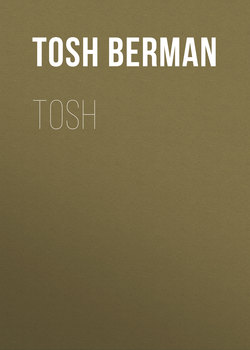Читать книгу Tosh - Tosh Berman - Страница 14
На сайте Литреса книга снята с продажи.
Semina / chapter 8
ОглавлениеDue to Wallace’s friendship with Cameron, some commentators have tried to establish a “magick” connection between them. But while my Dad respected Cameron’s interest in the occult world, he had no interest in it. On the other hand, Wallace admired literature that has strains of the metaphysical. The big book in his life at that time was Hermann Hesse’s 1927 novel Steppenwolf. Hesse was considered a major writer during the ’20s, but he lost favor in the succeeding decades. In the 1960s, he would be rediscovered by, and become very popular with, students and the bohemian reading crowd. But in the ’50s, he was nearly unknown.
Wallace discovered Steppenwolf as a remainder at Pickwick Books on Hollywood Boulevard. After reading it, he bought most of the copies up and gave the book out to friends. When Wallace was a fan of something, he pretty much became a distributor of that work and made sure all his friends picked up a copy. Not only that, but he became a pen pal of Hesse. They wrote back and forth to each other, but unfortunately, my father’s letters from Hesse were all destroyed in a mudslide in 1965. I read Steppenwolf many years ago as a teenager, and the book made an impression on me as well. The novel is about a man who has trouble finding himself in a bourgeois society not of his making, and he comes upon a person who tells him about a magic theater that is hidden in a music hall. There, he takes a journey of sorts that rejoins his human nature to that of a Steppenwolf, combining beast and intellect to make him whole. I think anyone dealing with the straight world and the tension of that world with the boho scene would easily be attracted to this novel.
WALLACE BERMAN / Semina 4, 1959
Before my family left for San Francisco, Wallace started up Semina. This small publication might be called a “zine” these days. It was a collection of loose pages printed on different papers that consisted of poetry, photographs, and drawings. Editions would have a print run of between 150 and 350 copies, all of them done on a hand printing press in his home or studio. I feel that Semina was the perfect medium for my father to interact with the world. Most of the copies were mailed or handed out for free. When our family moved to San Francisco, he went to City Lights Bookstore to have Semina sold there on consignment. Each one cost a dollar. Nowadays they’re priceless, and it’s tough to find an original Semina, especially one that’s entirely intact. Each issue had its individual look and design, though the size of the publication was almost, if not exactly, consistent. Most issues are loose pages but some were fold-outs as well. For sure Semina had certain trademark visuals from my father uniting the entire run, but to me each issue is a complete world of its own.
There has historically been a tradition of poets or artists making their publications, not only of their work but also of works that they admired by other artists and writers. A good example is the surrealists, who started up their various publications to publish not only their own work but also that of fellow travelers and artists they admired from the past. The poets in Semina include Michael McClure, David Meltzer, and Philip Lamantia, along with older writers like Hermann Hesse, Jean Cocteau, and Antonin Artaud. Through Semina, Wallace could communicate with and bring the artistic world closer to his home base, not physically but spiritually. Each person who saw, read, or owned a copy of Semina was a fellow member of the club. That’s what a publication should do, and Semina was very successful in those terms.
The beauty of Semina is that it was a periodical made not to be sold on the marketplace. Wallace’s intention was to personally hand each issue to a friend or someone he admired. Or, in most cases, he sent it to people through the mail. No one could officially subscribe to the publication, and except for that one issue sold at City Lights, Semina never was sold in a retail or specialty shop. So to receive a copy was truly a unique gesture between artist and reader. It was likewise a publication or object that didn’t have money value, at least when my dad was alive. In Latin, “semina” means “seed,” or the thick whitish fluid we call “semen.” It’s a perfect name for a magazine given away for free, which would hopefully inspire other publications. Which it has. Semina has significantly influenced many printers, artists, and photographers, so its name is satisfactory terminology for spreading new life.
